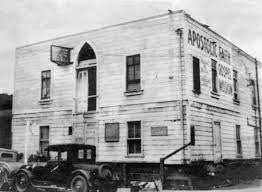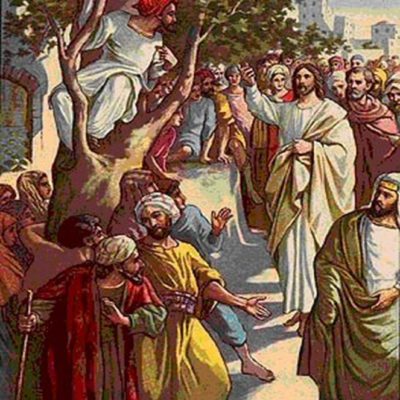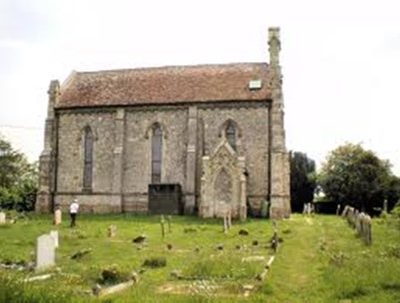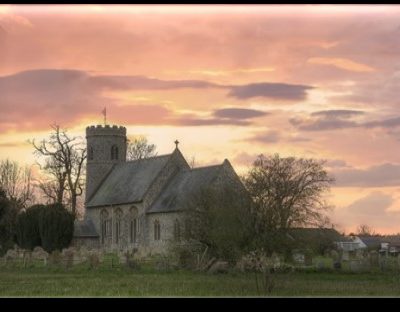Azusa (Asusa) Street Revival Birth of the Pentecostal Movement

Introduction
At the turn of the twentieth century, California was a dream destination by many because it had become a major hub of society, education, adventure, and freedoms of all kind. Two events shook California in April of 1906 and forever changed its history. The first was recorded on the front page of the Los Angeles Daily News the morning of April 18, 1906, which read “Weird Babel of Tongues” heard from a “New Sect of Fanatics Breaking Loose” at a former livery stable at 312 Azusa St, downtown Los Angeles. The reporter described a mixed congregation of blacks and whites, which at that time was in itself news worthy that began howling and swaying in such frenzy that no one could understand their utterances. Screams of “repent” were the only audible words that could be heard coming from the Azusa Street Revival. (Balme.2004).
The second shock that hit April 18, 1906, happened at 5 a.m. when a horrendous earthquake hit San Francisco California. The shock waves were felt from Los Angeles to Oregon, to the Pacific Ocean. There was destruction, death, and desolation that shook the very core of the hearts of those involved in the destruction and those that were watching from afar. There were two more earthquakes in Los Angeles just before noon, causing more panic and uncertainty. (Balme.2004).
Out of this chaos and uncertainty came the birthplace of the Pentecostal Movement Revival and the birth of a spiritual renewal that hit around the world. There were thousands that converged on Los Angeles to attend the revival at Azusa Street Mission. They all claimed to have received a renewed purpose and a new passion to serve Jesus Christ. Even today many of the Pentecostal and Charismatic church around the world claim their beginnings from the Azusa Street Revival.
The Azusa Street Revival in Los Angeles was led by William Joseph Seymour who was an African American preacher from a Black Holiness Church. William Joseph Seymour led the Azusa Street Apostolic Faith Mission for three years, holding services three times a day for seven days a week. Thousands received the “Tongues Baptism”; Pentecostalism was born and spread around the world. “Tongues Baptism”
The Azusa Street Revival in Los Angeles was a mixture of the White American Holiness religion and the worship derived from the African American Christian tradition. The worship and praise at Azusa Street used a style that came from the Appalachian Whites and Southern Blacks and included dancing and shouting. The merging of Black and White, men and women and the participation from all of the ethnic minorities of Los Angeles was a phenomenon that was almost unheard of in 1906. It has been described as the color line being washed away in the Blood. William Seymour became the most influential black leader and is credited as being the co-founder along with Charles Parham of the world of Pentecostalism. (Alexander. 2005).
The Azusa Street integrated worship did not last long past the Revival itself. The African Americans organized under the Church of God in Christ and the White Pentecostals congregated as the Assemblies of God denominations, both coming from the Azusa Street Revival. There also were two other large revivals that came from the Azusa Street tradition which were the Brownsville Revival, also called Pensacola Outpouring, and the Toronto Blessing Revival. (Balme.2004).
The Toronto Blessing started with a January 1994 sermon at the Toronto Airport Vineyard Church, where the congregants started jumping and dancing and laughing and crying as they were seized by the Holy Spirit. This phenomenon spread quickly but did not last past a few years. The Brownsville Revival began in Pensacola, Florida in 1995 as a revival and also had the enthusiastic type worship. They held services every night and drew in thousands, but like the Toronto Blessing, it died off after a few years.
History
The Azusa Street Revival was the beginning of the restoration of the New Testament Christianity. This early revival had participants believing they were experiencing an infilling of the Spirit and power of God just as the early Apostles did on the Day of Pentecost. It was on that day that Christ had commanded his Disciples to gather together in Jerusalem to wait for the promise of the Holy Spirit. The Holy Spirit was believed to empower the early Christian Church to be able to complete their work Jesus Christ had started on the earth… “And when the day of Pentecost was fully come, they were all with one accord in one place. And suddenly there came a sound from heaven as of a rushing mighty wind, and it filled all the house where they were sitting. 3 And there appeared unto them cloven tongues like as of fire, and it sat upon each of them. 4 And they were all filled with the Holy Ghost, and began to speak with other tongues, as the Spirit gave them utterance.” (Acts 2:1-4).
There are two men who are credited with the Azusa Street Revival…Charles Fox Parham and William Joseph Seymour. They became acquainted with each other in 1905 when Seymour traveled to Houston, Texas and attended a Black Holiness Congregation that was pastured by Lucy Farrow. Lucy Farrow was a former slave and the niece of the abolitionist Frederick Douglass. She was living in Kansas City and served as a governess and cook for the evangelist Charles Fox Parham. William Seymour became the interim Pastor for the Holiness Congregation in Houston. Lucy Farrow, along with Charles Parham, returned to Houston. There Lucy testified of her spiritual experience and Holy Ghost Baptism which was evidenced by speaking in tongues. (Alexander. 2005).
Charles Fox Parham was a teacher at the Bethel Bible School in Topeka, Kansas. Several of his students had experienced glossolalia, the speaking in other languages, after several hours of studying the Bible and praying. It was Charles Fox Parham who called “glossolalia” the “speaking in tongues” and stated it was the proof that someone had been baptized with the Holy Ghost according to Bible evidence. It was contrary to most of the Holiness believers who believed that someone was baptized with the Holy Spirit upon becoming sanctified. Charles Parham started teaching there were three works of grace that were available for the Christians. They were Sanctification, Salvation, and the Baptism of the Holy Ghost with the Bible evidence of speaking in other tongues. Charles Fox Parham relocated to Houston Texas and taught at Bryan Hall and held classes on repentance, conviction, sanctification, healing and the Holy Spirit mission, as well as prophecies and the Book of Revelation. (Balme.2004).
William Joseph Seymour was an African American from Louisiana and was a son of a former slave who had severe case of smallpox which left him blind in one eye and a disfigured face. He was born May 2, 1870 in Centerville Louisiana. His father had fought with the Union Army during the Civil War. He was spiritually influenced by Roman Catholicism and the Baptist traditions. He was converted in Indianapolis and joined the Methodist Episcopal Church. He was wholly sanctified in Cincinnati, Ohio while he was affiliated with another Holiness group. He was an interim pastor for a Holiness congregation in Houston Texas. (Sanders. 2003).
William Joseph Seymour attended the training sessions that Charles Fox Parham taught. Because of the segregation laws of the time, William Seymour was forced to sit in the hallway and listen to the teachings of Parham. He desired to receive the Baptism of the Holy Spirit and was convinced the teachings about the Holy Spirit Baptism were biblically correct, and he preached the message with fervor. (Alexander. 2005).
Seymour was discovered by Neely Terry, who was a resident of Los Angeles and attended a Holiness church there, and she asked Seymour to return to California and visit her church. Seymour agreed to go and before leaving Houston had Parham lay hands on him before he went forth on his evangelistic endeavor.
Seymour arrived in Los Angeles February 22, 1906 and immediately began to preach at the Holiness Church. His message was of sanctification, regeneration, faith healing, and the baptism of the Holy Ghost with evidence of speaking in other tongues. This preaching was rejected and soon Seymour was locked out of the church. (Sanders. 2003).
Seymour was convinced that God was about to bless Los Angeles with a spiritual outpouring. He continued to gather for prayer and worship and conducted services in homes. William Joseph Seymour received his Holy Ghost Baptism on April 12, 1906. Those that witnessed his Holy Ghost Baptism shouted and danced for three days and three night praising God. Many people came and received baptism, many of the sick were healed, and sinners were saved. There was indeed and outpouring of the Holy Spirit in Los Angeles. (Sanders. 2003).
The followers of Seymour were so great they had to get a building in order to meet. The 312 Azusa Street building was available. It had originally been used as an African Methodist Episcopal Church. It had fallen in disrepair and had been used as a stable to house hay and livestock. The building was secured and cleaned up within days and the Azusa Street Mission was born. The revival took place within a few days of obtaining the Mission. Thousands came together in worship and prayer; men, women, children, the aged, blacks, whites, Hispanic, Asians, the rich and the poor the educated and the uneducated when they all flocked to Los Angeles to attend the Azusa Street Mission Revival. William Joseph held three services a day, seven days a week, for three years. Seymour would tell his believers to talk about Jesus Christ, rather than about talking in tongues. (Alexander. 2005).
William Joseph Seymour led the worship with the help of blacks, whites, men, women young and old volunteers. The Revival continued for three years. He continued to serve as the pastor of the Apostolic Faith Mission on Azusa Street along with his wife Jennie Evans Moore, whom he married in May 13, 1908. They lived on top of the mission and organized schools, rescue missions and other congregations, all the time preaching the Holy Ghost Baptism and preaching against racism. William Joseph Seymour died on September 28, 1922 in Los Angeles, California. (Sanders. 2003).
The Azusa Street Revival
William Joseph Seymour sat behind two wooden boxed that were stacked up as his pulpit and prayed. The pews were planks that were on top of barrels. There were eyewitness accounts about the waves of glory that would hit the meeting room and people would respond by crying out in prayers of thanksgiving and praise and would receive the baptism in the Holy Spirit. Some worshippers were speaking in tongues, while others were engulfed in “holy quietness” or “slain in the Spirit” which is a trance like state where the person would fall to the floor unconscious and receive visions from the Lord. These meetings would go past midnight and into the early hours of the morning. (Alexander. 2005).
Because of this outpouring of the Holy Spirit thousands were led into a deeper relationship with Jesus Christ, and they started studying the Word of God and surrendering their lives to Jesus Christ. They had been baptized with the Holy Ghost and were being led into a greater spiritual truth. Signs and wonders followed these believers and the blind eyes were opened, the deaf were able to hear, the mute started speaking, the lame walked and there were claims of the dead being raised to life. This Spirit filled life spread from Los Angeles to the entire world. A new Christianity called Pentecostal and Charismatic was born. The Azusa Street Revival brought about the existence of the Assemblies of God Church as well as the Christian and Missionary Alliance. (Maxwell. 1996).
Ivey Campbell from Akron Ohio received the Holy Ghost Baptism at the Azusa Street Revival in 1906 and returned Akron Ohio and held a sharing in the summer of 1907 where many of the ministers and laity of the Christian and Missionary Alliance came into the outpouring experience of the Holy Spirit. Some of these members spread to the Assemblies of God Church. (Alexander. 2005).
- B. Cashwell was a minister of the Holiness Association of North Carolina and received the Holy Ghost Baptism at the Azusa Street Revival in 1906 and returned to start the Fire Baptized Holiness Church. The General conference of the Church of God also benefited from the outpouring of the Holy Spirit. (Balme.2004).
- H. Mason was a black Holiness minister in Memphis Tennessee and received the Holy Ghost Baptism at the Azusa Street Revival in 1906 and spread the message he was the founder of the Church of God in Christ. (Balme.2004).
The Latter Rain movement began with Pentecostal power during the time many conservatives denied the Baptisms of the Holy Spirit. The year 1948 was a defining year for the Latter Rain Movement from the prospective of the end time thinkers. The year 1948, according to the Latter Rain Movement, is the beginning that signals the end times. Politically, 1948 saw the formation of the United Nations and the establishment of the State of Israel as well as the Prophetic and the Evangelistic Movements gaining power. (Alexander. 2005).
Belief
Charles Parham taught there were three works of grace that were available for the Christians. They were Sanctification, Salvation and the Baptism of the Holy Ghost with the Bible evidence of speaking in other tongues. He also taught justification was by faith; sanctification was the second work of grace, with divine healing, and the pre-millennial second coming of Jesus Christ. (Balme.2004).
William Seymour proclaimed that the Apostolic Faith had three stages in the salvation process. He taught people must be converted, be sanctified and spirit filled. Seymour taught believers the Holy Spirit is a gift of power upon the sanctified life. He taught the proof of the Baptism of the Holy Spirit was the speaking in new tongues. (Archer. 2004).
There were three themes that came out of the Azusa Street Revival which were the cleansing through the blood of Jesus, the return of Jesus and the unity of believers. The outpouring of the Holy Spirit brought about the speaking in other tongues, prophecy and the healing of the sick. (Archer. 2004).
The Azusa Street Revival also believed there would be a great outpouring of the Holy Spirit before the rapture of the church. Part of the Pentecostal experience is the Baptism of the Holy Spirit and the speaking in tongues. It is often followed by dancing and an outburst of “holy laughing”. Pentecostal doctrine and culture are usually considered conservative. They reject the dogmatism of many traditional churches. (Archer. 2004).
References:
Alexander, Estrelda. (2005). The Women of Azusa Street. Pilgrim Press.
Archer, Kenneth. (2004). A Pentecostal Hermeneutic for the Twenty First Century: Spirit, Scripture and Community. New York: T&T Clark International.
Balme, Randall, (2004). Encyclopedia of Evangelicalism. Baylor University Press.
Maxwell, Joe. (1996). “Building the Church (of God in Christ),” Christianity Today.April 8, 1996, Vol. 40, No. 4
Sanders, Rufus G. W. (2003). William Joseph Seymour: 1870-1922. Sandusky, OH; Alexandria Publications.
Cite Article Source
MLA Style Citation:
Holstein, Joanne “Azusa (Asusa) Street Revival Birth of the Pentecostal Movement:.” Becker Bible Studies Library Apr 2015.<https://guidedbiblestudies.com/?p=2795,>.
APA Style Citation:
Holstein, Joanne (2015, April) “Azusa (Asusa) Street Revival Birth of the Pentecostal Movement:.” Becker Bible Studies Library. Retrieved from https://guidedbiblestudies.com/?p=2795,.
Chicago Style Citation:
Holstein, Joanne (2015) “Azusa (Asusa) Street Revival Birth of the Pentecostal Movement:.” Becker Bible Studies Library (April), https://guidedbiblestudies.com/?p=2795, (accessed).


